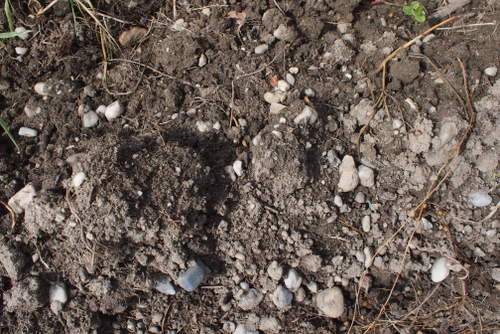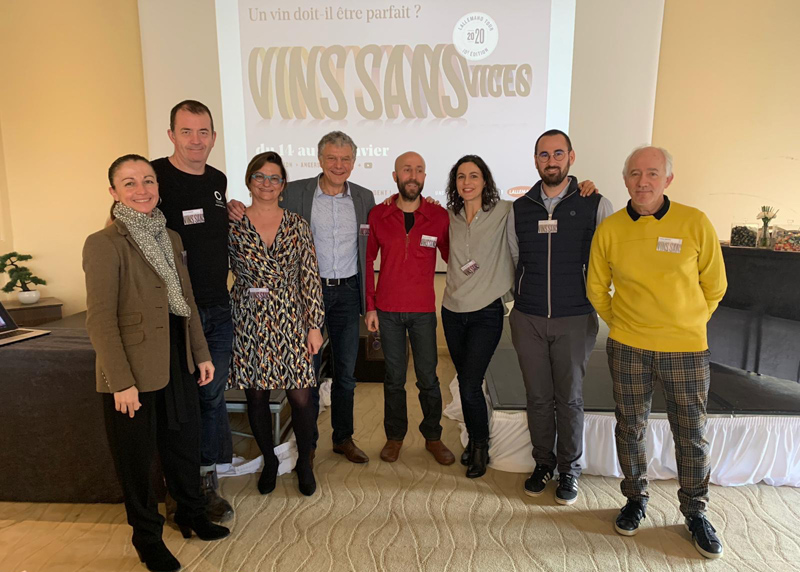
I’ve spent a few days in Bordeaux, during which I’ve had a chance to speak to a few knowledgeable people and also to walk through quite a few vineyards. (And run through some, too.) Harvest is a few weeks off, so it’s interesting to see the marked differences among the various sites. Even within small distances, the soils can vary quite a bit, and with it the way the vines grow and the sort of crop they carry varies too.
Bordeaux makes some of the world’s most collectable, expensive red wines, as well as some very ordinary ones. This is true even within the Médoc. Clearly, everyone would love to make great wines, but not everyone can. If they could, they would: there’s proper money to be made at the very top end.

In Bordeaux, whether or not you can make great wines depends on several factors, but the upper limit for quality is set by the vineyard soils. However good your vineyards and viticulture, you can’t make a great wine unless you have a great terroir. [Of course, it is possible to make a bad wine from a great terroir.]
What is a good terroir in the Médoc? The key here, and putting it in simple terms, is quartz rich river gravels/pebbles. Some bits of the Médoc are basically swamp still, and no one plants vineyards there. But of the portion where vineyards are planted, the more gravel and the less soil you have the better. There are of course other factors, such as the presence of sand and clay. But it’s the freer draining, less fertile, gravel-rich soils that deliver the best quality wine.

A relaxed wander around the Margaux vineyards near where I was staying illustrated the variation in soils over even quite short distances. Lower vigour, gravelly soils are mostly planted with Cabernet Sauvignon, and the grapes looked really good, with nice thick skins, open bunches, relatively low yields and balanced canopies. Then, a few feet away, there are blocks with much less gravel and a richer, loamy soil. These are typically planted with Merlot. The trunks on the vines are typically thicker (where the vines are of a similar age), the canopies much more dense, and the yields often higher. But the grape bunches showed a bit of uneven ripeness, and didn’t look as promising.
I couldn’t tell what was happening below the surface. A vineyard that is just gravels isn’t ideal because the vines will experience too much stress later in the growing season. But a gravelly soil with a bit of clay (and the right sort), can deliver just enough stress at the right time, but not too much.

This weekend I spent some time at Château Pichon-Longueville. I asked Christian Seely whether the vineyards at Pichon had terroirs as good as the neighbouring first growths. His answer was that bits of the vineyard were as good (I hope I’m not embarrassing him here; I appreciate his honesty). Over the last few years the team at Pichon has been reducing the amount of Grand Vin produced so that they can work with their best terroirs.
But then I had a thought. What if Pichon were to be producing wines that were qualitative equals of the Pauillac first growths? I am not saying that they are or that they aren’t: I will leave that to others with more experience in Bordeaux to decide, although I’d add that Pichon is making superb wine at the moment. How long would it take journalists, who always taste these caliber of wines sighted (the first growths insist that you come to them to taste in primeurs week), to recognize this? I reckon a generation.
5 Comments on Ceilings for wine quality in Bordeaux

Nice post, some nice pictures too, and well done on your Médoc Marathon success by the way.
I fall prey to the temptation to photograph surface soils and then debate vineyards terroir myself, but the truth is I’m not sure how reliable this is as a guide to the genuine quality of the soils or “terroir” in question. All you see are the characteristics of the surface soils, but it is what lies deeper that probably matters.
The “gravel mounds” of Bordeaux are more complex than mere piles of gravel. Professor Gerard Seguin of Bordeaux University studied Bordeaux soils in detail and demonstrated that the mounds, although topped by gravelly soils, are comprised of complex layers of other materials which occur as “lenses” within the mound, these lenses being clay, clay-gravel and hand and soft sands, above a bedrock.
He concluded what really mattered was not soil type (material or acidity) but how the terroir influenced drainage; if the material was well drained, and there were enough layers above the water table for the vines to root (maybe 5 metres or more), you could get good wine. The lenses are also useful as some store water better than gravel, useful for dry periods.
As for wine tasters taking a generation to spot first growth quality in Pichon, I think that’s nonsense. I agree with the point that you are making, that there is a disparity between the way first growths and other wines are assessed, and ideally that would be different, but I think everyone tasting Pichon-Baron is asking themselves “how does this compare to Latour and Lafite”. Indeed, that’s been a common point of discussion in recent vintages, but not with Pichon-Baron. Try Pontet-Canet instead.
Good points, Chris – I agree, and that’s why I mention what’s going on under the surface. Kees van Leeuwen has also done some good work on Bordeaux terroirs http://www7.bordeaux-aquitaine.inra.fr/egfv/kees_van_leeuwen – in addition to Seguin’s earlier studies. Clays could also be pretty important, if they are of the right sort.
But despite this, the state of the vines at this time of year (for example, trunk circumference is a good indication of vigour in vines of the same age – and of course the canopies) seems to correlate pretty well with how the soil surface looks. Those plots that have more gravelly surface soils tend to be much more promising for fine wine than those with loamy surface soils and much less gravel evident.
Is the whole medoc terroir story all about altitude? The so called mounds – the best plots, are all higher than everywhere else, and doubtless better draining. It seems to me this is a very visual feature that seems to correlate with the best sites.
Thanks for this interesting article. I really like Bordeaux vineyards.
Jamie, the person to talk is pierre Becheler. Van L. made his Ph.D on limestone at St Emilion, not gravels. The 6 terraces system is the key to understand those soils, and Pierre was the guy behind that. Best.